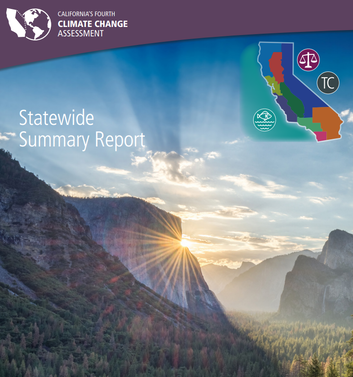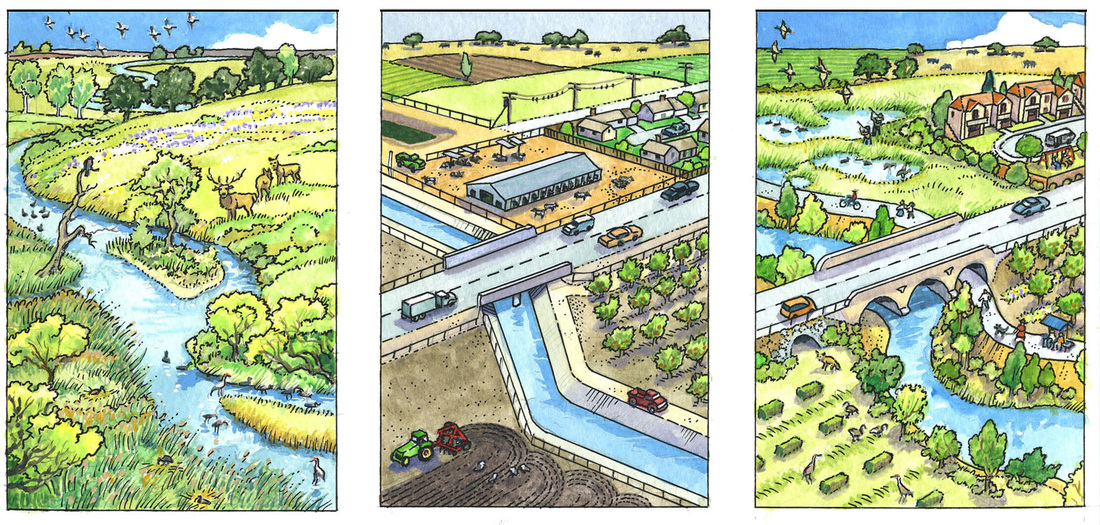Climate Change Adaptation Solutions
This page is pending completion in the near future, please check back!
If you have suggestions or ideas in regards to Climate Change Adaptation Solutions please email us at [email protected].
If you have suggestions or ideas in regards to Climate Change Adaptation Solutions please email us at [email protected].
|
"California is a global leader in using, investing in, and advancing research to set proactive climate change policy, and its Climate Change Assessments provide the scientific foundation for understanding climate related vulnerability at the local scale and informing resilience actions. The Climate Change Assessments directly inform State policies, plans, programs, and guidance to promote effective and integrated action to safeguard California from climate change."
|
Introduction to California’s Fourth Climate Change Assessment
"California’s Fourth Climate Change Assessment advances actionable science that serves the growing needs of state and local-level decision-makers from a variety of sectors. This cutting-edge research initiative is comprised of a wide-ranging body of technical reports, including rigorous, comprehensive climate change scenarios at a scale suitable for illuminating regional vulnerabilities and localized adaptation strategies in California; datasets and tools that improve integration of observed and projected knowledge about climate change into decision-making; and recommendations and information to directly inform vulnerability assessments and adaptation strategies for California’s energy sector, water resources and management, oceans and coasts, forests, wildfires, agriculture, biodiversity and habitat, and public health. In addition, these technical reports have been distilled into summary reports and a brochure, allowing the public and decision-makers to easily access relevant findings from the Fourth Assessment." |
TBWP seeks to integrate multiple "ecosystem services" benefits into water and other natural resource projects. Ecosystem services are resources and processes supplied by natural ecosystems that benefit humans, and include the following:
- Purification of air and water
- Mitigation of floods and droughts
- Detoxification and decomposition of wastes
- Soil and soil fertility generation and renewal
- Pollination of crops and natural vegetation
- Control of agricultural pests
- Dispersal of seeds and cycling of nutrients
- Restoration of wetlands and uplands to diversify species
- Recreation and education opportunities
- Protection from ultraviolet rays
- Climate change adaptation strategies
LUNRIThe Land Use and Natural Resource Integration (LUNRI) program is designed to provide county planners and decision-makers with guidelines to make sustainable, long-term land use choices that strike a balance between growth and protecting the natural resources upon which we all depend. The focus is on natural resource conservation and restoration in the non-urban areas of the Tulare Basin in Fresno, Tulare, Kings, and Kern Counties.
Small Scale Organic FarmingFrom Peter M. Rosset's "Benefits of Small Farm Agriculture":
The benefits of small farms extend beyond the economic sphere. Whereas large, industrial-style farms impose a scorched-earth mentality on resource management — no trees, no wildlife, endless monocultures — small farmers can be very effective stewards of natural resources and the soil. Small farmers utilize a broad array of resources and have a vested interest in their sustainability and their farming systems are diverse, incorporating and preserving significant functional biodiversity within the farm. By preserving biodiversity, open space and trees, and by reducing land degradation, small farms provide valuable ecosystem services to the larger society. |
Land RetirementFrom Aquapedia: Land retirement is a practice that takes agricultural lands out of production due to poor drainage and soils containing high levels of salt and selenium (a mineral found in soil).Landowners are paid to retire land. The purchaser then places a deed restriction on the land to prevent growing crops with irrigation water (a source of salt).
Restored native plant communities on retired land may also provide important habitat for the recovery of special-status species. Native Plant LandscapingFrom the California Native Plant Society: Native vegetation evolved to live with the local climate, soil types, and animals. This long process brings us several gardening advantages.
|
by Doug Hansen



